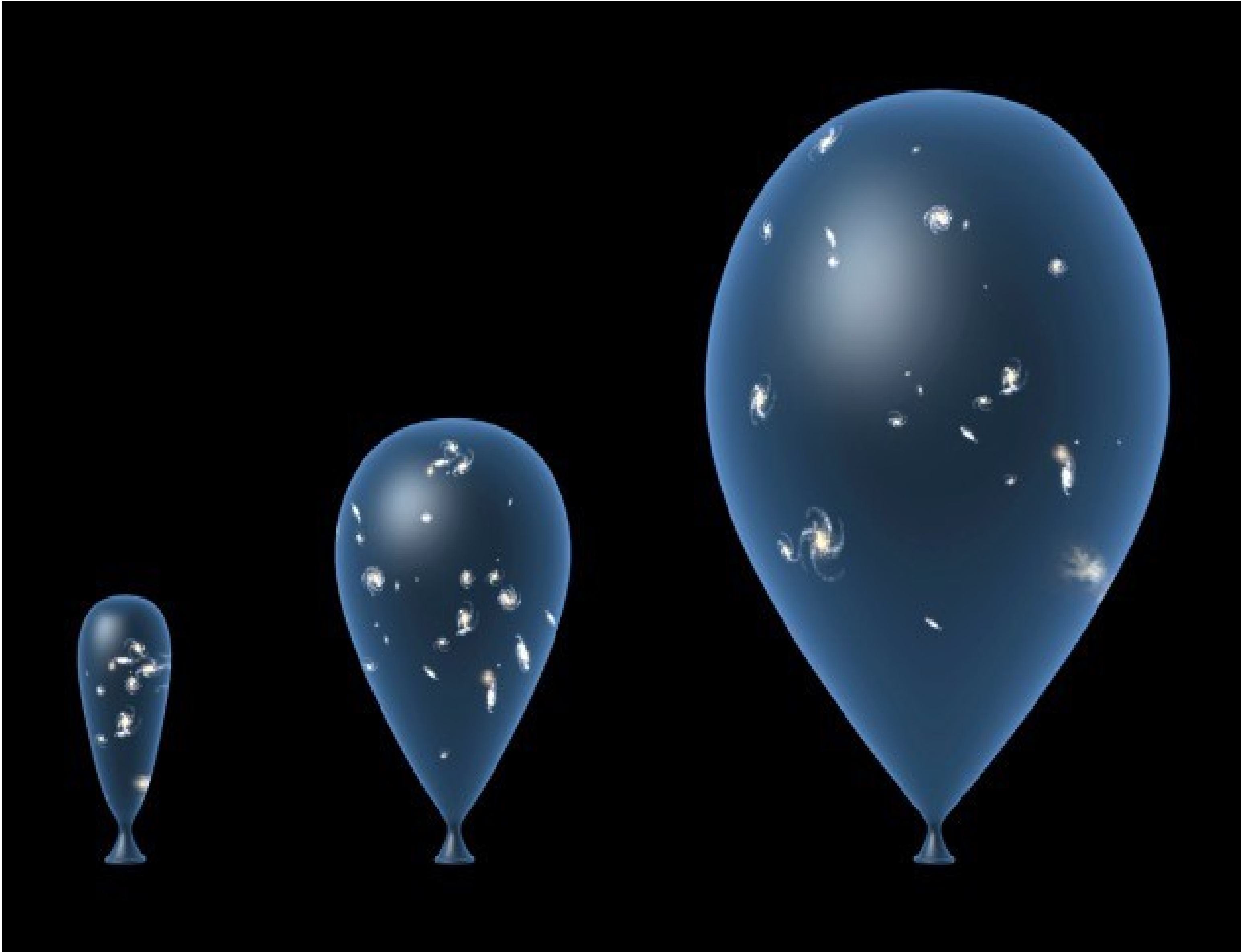Subsection 14.1.8 Expansion of the Universe
Hubble’s law describes the relationship between the distance to a galaxy and its observed redshift. The law states that the farther away a galaxy is from us, the faster it is moving away from us. This relationship is described by the equation
\begin{equation*}
v = H_0 \times d,
\end{equation*}
where \(v \) is the velocity of the galaxy, \(d \) is its distance from us, and \(H_0\) is the Hubble’s constant, which is a measure of the rate at which the Universe is expanding. The Hubble constant has been determined through observations of distant galaxies and is currently estimated to be around 73 kilometers per second per megaparsec. This means that for every megaparsec (about 3.26 million light-years) of distance, a galaxy appears to be moving away from us at a rate of 73 kilometers per second. The discovery of Hubble’s law revolutionized our understanding of the Universe and led to the development of the Big Bang theory. Hubble’s law provides strong evidence that the Universe is expanding, and that it began with a single, explosive event around 13.8 billion years ago.

3
www.nature.com/articles/nature.2013.13379The balloon analogy Figure 14.1.3 is often used to explain the expansion of the universe. In this analogy, the universe is represented by the surface of a balloon, and as the balloon is inflated, all points on the surface move away from each other. In this analogy, the size of the balloon represents the size of the universe, and the dots on the surface represent galaxies. As the balloon expands, the distance between any two dots (galaxies) increases. This is similar to how the distance between any two galaxies in the universe is increasing due to the expansion of the universe.
